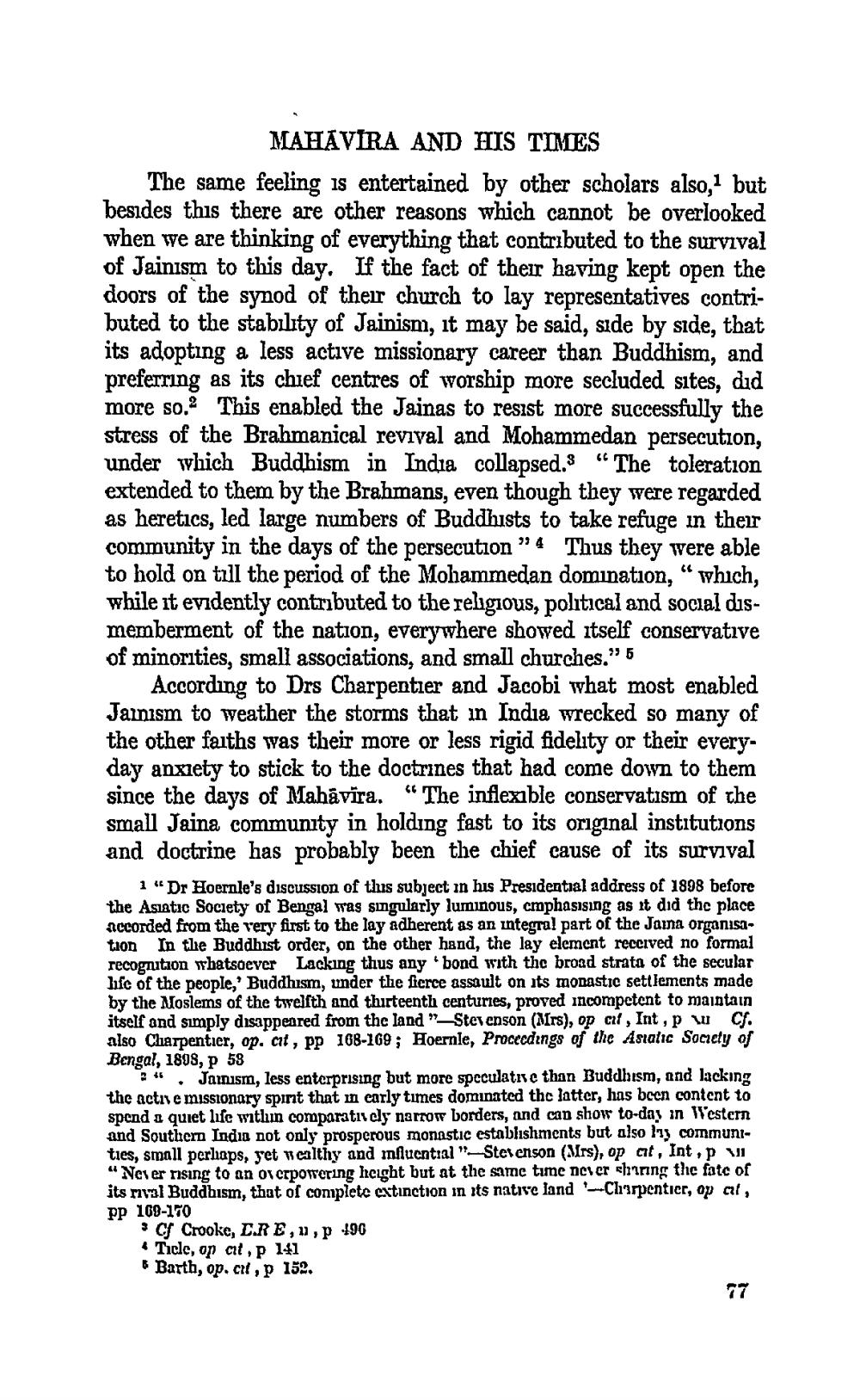________________ inevival and Mohamore successfully to extended toch Buddhism MAHAVIRA AND HIS TIMES The same feeling is entertained by other scholars also, but besides this there are other reasons which cannot be overlooked when we are thinking of everything that contributed to the survival of Jainism to this day. If the fact of their having kept open the doors of the synod of their church to lay representatives contributed to the stability of Jainism, it may be said, side by side, that its adopting a less active missionary career than Buddhism, and preferring as its chief centres of worship more secluded sites, did more so. This enabled the Jainas to resist more successfully the stress of the Brahmanical revival and Mohammedan persecution, under which Buddhism in India collapsed. "The toleration extended to them by the Brahmans, even though they were regarded as heretics, led large numbers of Buddhists to take refuge in their community in the days of the persecution" 4 Thus they were able to hold on till the period of the Mohammedan domination," which, while it evidently contributed to the religious, political and social dismemberment of the nation, everywhere showed itself conservative of minorities, small associations, and small churches." 5 According to Drs Charpentier and Jacobi what most enabled Jainism to weather the storms that in India wrecked so many of the other faths was their more or less rigid fidelity or their everyday anxiety to stick to the doctrines that had come down to them since the days of Mahavira. "The inflexible conservatism of the small Jaina community in holding fast to its original institutions and doctrine has probably been the chief cause of its survival 1"Dr Hoernle's discussion of thus subject in his Presidential address of 1898 before the Asiatic Society of Bengal was singularly luminous, cmphasising as it did the place accorded from the very first to the lay adherent as an integral part of the Jama organisation In the Buddhist order, on the other hand, the lay element received no formal recogrution whatsoever Lacking thus any bond with the broad strata of the secular life of the people,' Buddhism, under the fierce assault on its monastic settlements made by the Moslems of the twelfth and thirteenth centuries, proved incompetent to maintain itself and simply disappeared from the land Stevenson (Mrs), op cit, Int, pw cy. also Charpentier, op. cit, pp 168-169; Hoernle, Proceedings of the Astatic Society of Bengal, 1808, p 58 ". Jarnism, less enterprising but more speculative than Buddhism, and lacking the active missionary spint that in carly times dominated the latter, has been content to spend a quiet life witlun comparatively narrow borders, and can show to-day in Western and Southern Indio not only prosperous monastic establishments but also l'us communities, small perhaps, get wealthy and influential " Stevenson (Mrs), op cit, Int , p vi "Net er rising to an or crporering height but at the same tue neser ning the fate of its rival Buddhism, that of completo extinction in its native land Charpentier, op al, PP 169-170 C Crooke, C.RE,,p 490 * Ticle, op cit, p 141 Barth, op. cit, p 152.




